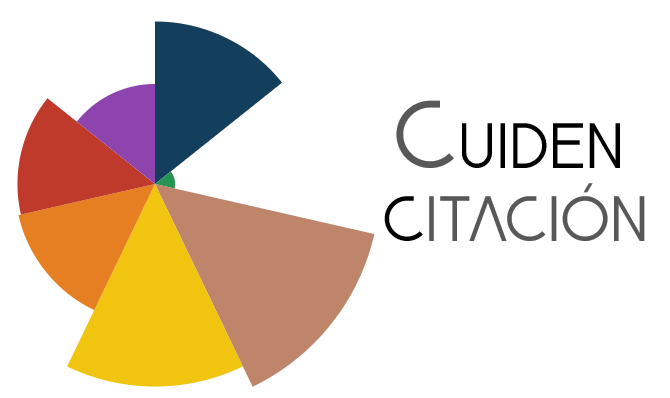Percepções de estudantes sobre o trabalho do enfermeiro na estratégia saúde da família
DOI:
https://doi.org/10.15253/2175-6783.20212261209Palabras clave:
Enfermagem; Enfermagem de Atenção Primária; Estudantes de Enfermagem; Atenção Primária à Saúde; Estratégia Saúde da Família.Resumen
Objetivo: compreender as percepções de estudantes de enfermagem sobre o trabalho do enfermeiro na Estratégia Saúde da Família. Métodos: pesquisa qualitativa desenvolvida com 19 estudantes de diferentes períodos do curso de graduação em enfermagem. Foram realizadas entrevistas semiestruturadas, procedendo-se, depois de organizadas, à análise temática e confrontação com alguns conceitos da Análise Institucional. Resultados: a análise dos dados deu origem a três temas: 1) Percepções dos estudantes sobre o processo de trabalho do enfermeiro, 2) O vínculo no trabalho do enfermeiro e 3) Limites estruturais e relacionais do trabalho do enfermeiro. Conclusão: o trabalho do enfermeiro na Estratégia Saúde da Família é algo em constante processo de institucionalização, requerendo uma gama de conhecimento teórico-científico e habilidades que se expressam pela autonomia e vínculo com os usuários. Contudo, enfrenta alguns atravessamentos como a escassez de infraestrutura, recursos humanos, materiais e a dificuldade no trabalho em equipe.
Descargas
Citas
Ministério da Saúde (BR). Portaria Nº 2.436, de 21 de setembro de 2017. Aprova a Política Nacional de Atenção Básica, estabelecendo a revisão de diretrizes para a organização da Atenção Básica, no âmbito do Sistema Único de Saúde (SUS). Brasília: Ministério da Saúde; 2017.
Costa DAS, Silva RF, Lima VV, Ribeiro ECO. National curriculum guidelines for health professions 2001-2004: an analysis according to curriculum development theories. Interface Com Saúde Educ. 2018; 22(67):1183-95. doi: http://dx.doi.org/10.1590/1807-57622017.0376
Cassiani SHB, Silva FAM. Expanding the role of nurses in primary health care: the case of Brazil. Rev Latino-Am Enfermagem. 2019; 27:e3245. doi: https://dx.doi.org/10.1590/1518-8345.0000.3245
Lima RS, Silva MAI, Andrade LS, Góes FSN, Mello MA, Gonçalves MFC. Construction of professional identity in nursing students: qualitative research from the historical-cultural perspective. Rev Latino-Am Enfermagem. 2020; 28:e3284. doi: http://dx.doi.org/10.1590/1518-8345.3820.3284
Ramos AC, Barlem JGT, Lunardi VL, Barlem ELD, Silveira RS, Bordignon SS. Satisfaction with acade- mic experience among undergratuate nursing students. Texto Contexto Enferm. 2015; 24(1):187-95. doi: http://dx.doi.org/10.1590/0104-07072015002870013
Mackey S, Kwok G, Anderson J, Hatcher D, Laver S, Dickson G, et al. Australian student nurse’s knowledge of and attitudes toward primary health care: a cross-sectional study. Nurse Educ Today. 2017; 60:127-32. doi: https://dx.doi.org/10.1016/j.nedt.2017.10.003
Bloomfield JG, Aggar C, Thomas THT, Gordon CJ. Factors associated with final year nursing students’ desire to work in the primary health care settings: findings from a national cross-sectional survey. Nurse Educ Today. 2017; 61:9-14. doi: https://doi.org/10.1016/j.nedt.2017.10.001
Escobar D, Covarrubias E. Academic and labor expectations for nursing students. Rev Cienc Cuidad. 2019; 16(2):59-71. doi: https://doi.org/10.22463/17949831.1608
Borges FA, Rézio LA, L’Abbate S. Fortuna CM. The entry in the field and the cration of device in socioclinical research. Psicol Estud. 2018; 23:e40373. doi: https://dx.doi.org/10.4025/psicolestud.v23.e40373
Vinuto J. Snowball sampling in qualitative research: an open debate. Temáticas. 2015; 22(44):203-20. doi: http://dx.doi.org/10.20396/temáticas.v22i44.10977
Souza LK. Research with qualitative data analysis: getting to know thematic analysis. Arq Bras Psicol. 2019; 71(2):51-67. doi: https://dx.doi.org/10.36482/1809-5267.ARBP2019v71i2p.51-67
Thumé E, Fehn AC, Acioli S, Fassa MEG. Training and practice of nurses for Primary Health Care – advances, challenges, and strategies to strengthen the Unified Health System. Saúde Debate. 2018; 42(esp1):275-88. doi: http://dx.doi.org/10.1590/0103-11042018S118
Lima VV. Construtivist spiral: an active learning methodology. Interface Com Saúde Educ. 2017; 21(61):421-34. doi: https://dx.doi.org/10.1590/1807-57622016.0316
Fortuna CM, Silva SS, Mesquisa LP, Matumoto S, Oliveira PS, Santana FR. The institutional socio-clinics as a theoretical and mythological framework for nursing and health research. Texto Contexto Enferm. 2017; 26(4):e2950017. doi: http://dx.doi.org/10.1590/0104-07072017002950017
Dall’Ora C, Ball J, Reinius M, Griffiths P. Burnout in nursing: a theorical review. Hum Resources Health. 2020; 18(41). doi: https://doi.org/10.1186/s12960-020-00469-9
Reeves S. Ideas for the development of the interprofessional education and practice field: an update. J Interprof Care [Internet]. 2016 [cited Oct 28, 2020];30(4):405-7. Available from: https://www.ncbi.nlm.nih.gov/pubmed/27332499
Reeves S, Xyrichis A, Zwarenstein M. Teamwork, collaboration, coordination, and networking: why we need to distinguish between different types of interprofessional practice. J Interprof Care [Internet]. 2018 [cited Dec 02, 2020];32(1):1-3. Available from: https://www.tandfonline.com/doi/full%20/10.1080/13561820.2017.1400150
Soratto J, Pires DEP, Scherer MDA, Witt RR, Ceretta LB, Farias JM. Family health strategy professional satisfaction in Brazil: a qualitative study. Texto Contexto Enferm. 2020; 29:e20180104. doi: http://dx.doi.org/10.1590/1980-265X-TCE-2018-0104
Tavares CM, Mesquita LM. Systematization of nursing and clinical assistance expanded: challenges for mental health education. Enferm Foco [Internet]. 2019 [cited Oct 28, 2020]; 10(7):121-6. Available from: http://revista.cofen.gov.br/index.php/enfermagem/article/view/2810/560
Calma KRB, Halcomb E, Stephens M. The impact of curriculum on nursing students’attitudes, perceptions and preparedness to work in primary health care: an integrative review. Nurse Educ Pract. 2019; 39:1-10. doi: https://doi.org/10.1016/j.nepr.2019.07.006
Descargas
Publicado
Cómo citar
Número
Sección
Licencia
Derechos de autor 2021 Rev Rene

Esta obra está bajo una licencia internacional Creative Commons Atribución 4.0.








